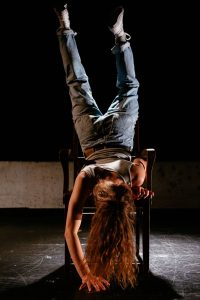“The master’s tools will never dismantle the master’s house” – Audre Lorde
Exotic is warm and spicy. It is one letter away from erotic. It promises adventure. Exotic is somewhere far away and foreign. Exotic is strange, but also very appealing and desirable. It is always over there, not here; them, not us; you, never me. Exotic is dark and mysterious, but its threat is tamed and contained.
The exotic industry has become a big and lucrative market, offering goods and services ranging from food, fashion, music, books, health products, workshops, collectibles, antiques to cultural attractions, theme events, tourism and corporate branding. It has often been touted as a fun and light way to promote the appreciation and experience of foreign cultures. But is it as innocent as it appears? What lurks beneath its foreigner-friendly surface? This collaborative performance invites the audience to see what it takes to create the ideal exotic look.
Drawing on his personal experience as a dancer of Asian origin, Ming Poon looks at how eurocentrism, globalization and cultural consumerism contribute to the exoticization of his body for the art market. Approaching the body as a site on which meanings, values and boundaries are inscribed, he interrogates how the exotic gaze displaces and appropriates his body, turning it into a cultural commodity and a symbol of subjugation. Exotic Animal both invites and confronts the exotic gaze. Staring defiantly back, it attempts to shift the power relation between the gazer and itself.
Warning: This performance contains cultural stereotypes and the white/racialized gaze.
Ming Poon is a Berlin-based choreographer who began his career as professional dancer in 1993 and started to develop his choreographic practice in 2010. He creates choreographic interventions, where spectators are invited to exercise their agency to create change. His works are interactive and collaborative in design. They usually take the form of collaborative performances, public interventions and one-to-one encounters. He works with vulnerability, care, peripherality and failure as performance strategy.
His practice is influenced by Buddhist concept of interdependence and care, Judith Butler’s resistance in vulnerability, Augusto Boal’s theater of the oppressed and Nicolas Bourriaud’s micro-utopias.
His works have been presented at Esplanade – Theatres on the Bay (Singapore), The Substation (Singapore), English Theatre Berlin | International Performing Arts Center (Berlin, Germany), Hebbel am Ufer (Berlin, Germany), Scenario Pubblico | Centro Nazionale di Produzione della Danza (Catania, Italy) and Südpol (Luzern, Switzerland).
